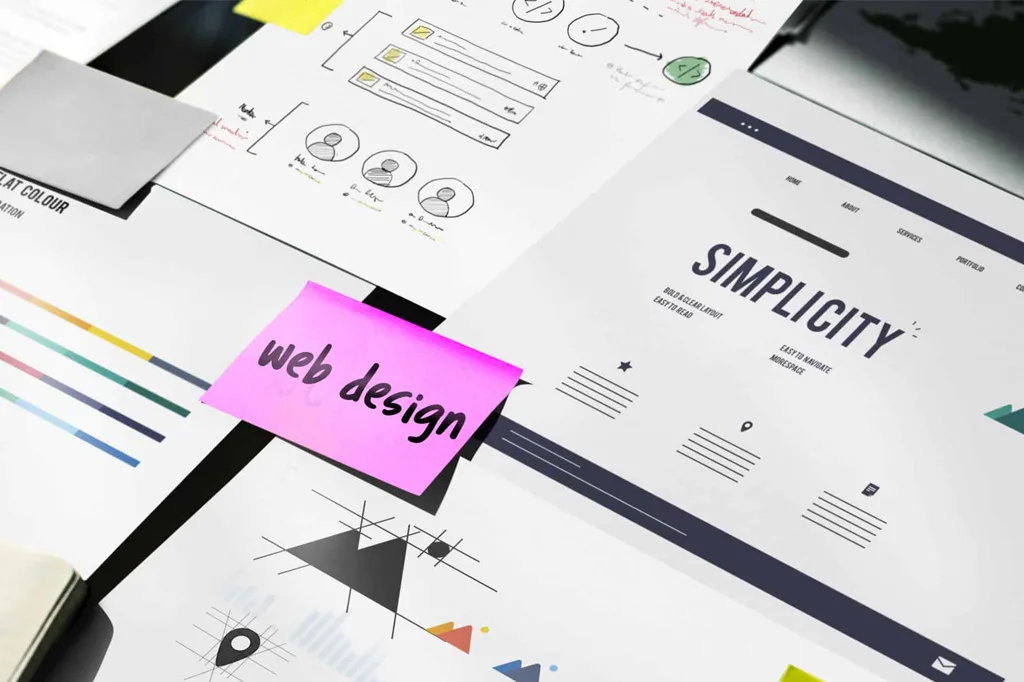
In the digital age, a website is often the first point of contact between a business and its potential clients. It’s a digital storefront, an information hub, and a communication platform all rolled into one. At North West Website Design, we understand the importance of a well-crafted website. That’s why we’ve honed our web design process to ensure that every site we create is not only visually appealing but also functional, user-friendly, and optimized for search engines. Here, we break down the stages of the web design process, giving you a behind-the-scenes look at what to expect from concept to launch.
Understanding the Web Design Process
Creating a website is akin to building a house. Just as architects draft blueprints and builders follow precise steps, web designers and developers adhere to a structured process to bring websites to life. This process involves several key stages: Planning, Design, Development, Testing, Launch, and Maintenance. Each step is crucial to ensure that the final product meets the client’s needs and expectations.
Stage 1: Discovery and Planning
Objective: Understand the client’s vision, goals, and requirements.
The journey begins with the discovery phase. This initial consultation involves detailed discussions with the client to understand their vision, target audience, and objectives. It’s about answering the fundamental questions: Who is the website for? What action do we want visitors to take? What content will be included?
Armed with this information, we move into the planning phase. This includes creating a sitemap that outlines the website’s structure and a wireframe that provides a skeletal layout of key pages. Planning ensures that we have a roadmap to guide the project, keeping it on track and within scope.
Stage 2: Design
Objective: Translate the client’s vision into a visually compelling and user-friendly design.
With the groundwork laid, our designers get to work crafting the visual aspect of the website. This stage is where creativity meets strategy. Designers select color schemes, fonts, and imagery that align with the client’s brand identity and appeal to the target audience. User experience (UX) principles guide the layout and navigation design, ensuring the site is intuitive and accessible.
The design phase culminates in a mockup—a detailed representation of the final website. This mockup serves as a visual blueprint, giving clients a clear picture of what the finished product will look like.

Stage 3: Development
Objective: Turn the design into a fully functioning website.
Once the design is approved, it’s time for development. This stage involves coding the website, bringing the static design to life. Developers build the site’s framework, add functionalities, and ensure that it’s responsive across all devices. Content management systems (CMS) like WordPress are often used to allow clients to easily manage and update their content post-launch.
Attention to detail is crucial during development. Code quality, SEO optimization, and mobile responsiveness are just a few of the factors that developers consider, ensuring the site is built on a solid foundation.
Stage 4: Testing
Objective: Ensure the website is bug-free and optimized for launch.
Before a website can go live, it undergoes rigorous testing. This includes functionality tests to ensure all features work as intended, compatibility tests to guarantee the site looks great on all browsers and devices, and performance tests to optimize loading times. Any issues that arise during testing are addressed promptly, ensuring the website operates smoothly.
Stage 5: Launch
Objective: Make the website publicly accessible.
The launch phase is the culmination of weeks or months of hard work. Once testing is complete and the client gives the green light, the website is published on the client’s domain. But the process doesn’t end there. The launch is carefully monitored to address any unforeseen issues promptly, ensuring a smooth transition.
Stage 6: Maintenance and Growth
Objective: Keep the website updated, secure, and aligned with the client’s evolving needs.
A website is not a set-it-and-forget-it asset. Post-launch, ongoing maintenance is essential to ensure the site remains secure, functional, and up-to-date. This includes regular updates, backups, and security checks. Additionally, as the client’s business grows and evolves, the website may require updates and enhancements to reflect new services, products, or branding.
Conclusion: Your Partner in Web Design
At North West Website Design, we’re committed to creating websites that not only look great but also perform. From the initial concept to the final launch and beyond, we work closely with our clients every step of the way, ensuring their vision comes to life in the digital space. Understanding the web design process is key to creating a successful online presence, and we’re here to guide you through each step.
Whether you’re looking to launch a new site or revamp an existing one, our team is equipped to bring your digital vision to reality. With a focus on creativity, usability, and technical excellence, we ensure that your website stands out in the crowded digital landscape. Let’s create something amazing together.

